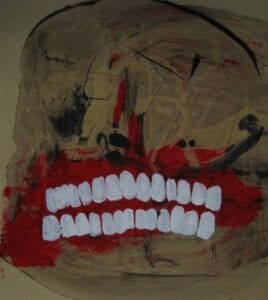Why Do We Make Art?
By Mason Gehring
April 19th, 2021
 This writing selection was part of my graduate Arts in Medicine program at the University of Florida.
This writing selection was part of my graduate Arts in Medicine program at the University of Florida.
Humans make art because after our necessities are met, there is a need for self expression and connectivity to a community. Art is not only used as a tool for identity of oneself but also as a part of a community, tradition, or ritual. Art connects humans and makes us belong. We use it to decorate ourselves, the space around us, and define moments that are sacred. “Art was the primordial way of making sense of the universe” (Serlin, 2007).
How does art lead to healing? It is in the defining of what art is and what is a tool that explains why art is a conduit for healing. The difference between art and a tool is that art is something that is made special or sacred. When the object or practice of a daily routine is now considered art it is given a power to become a transformative healing process.
Rituals are practices of every day routines that have been anointed with power. You could say rituals are sacred art in action. They are seen as a conduit between a person and the unknown greater thing of life. Not all rituals in cultures are focused on healing but a great majority are prior to the existence of modern medicine.
However, the vimbuza healing dance by the Tumbuka people is still considered a form of healthcare today because it is a ritual rooted in a deep belief of the healing power of dance, singing, drumming and participation of a community. ”Both diagnosis and cure are achieved through vimbuza dances, which are inextricably connected to music and drumming.” (Serlin, 2007). It is a week long healing ritual often mostly for women to heal mental illnesses and requires the women to dance their disease among other activities in the ritual. A drastically different approach to illness compared to western medicine. Not only do they look at illness and disease differently they invoke a community of women to participate in the healing process (UNESCO, 2008). They look at the disease as a spirit within us that needs to be subdued rather than killed, eradicated, or removed (Serlin, 2007). Western culture and medicine has removed us from knowing and listening to our bodies. We easily leave the healing up to doctors and drugs with no community involvement. For that, it is no surprise that we have limited community based art making rituals that promote a healing process.
What has been revealed to me is the limited practices in western culture that use artistic mediums as a form of healing with community involvement. The vimbuza dance ritual was particularly interesting because it used dance and singing as a form of medicine and needed a large group of people to create and administer this medicine. Also, that the “disease” that the people may be experiencing was given a space to exist in the community and was not hidden away. From a person who does not participate in an organized religion, I am not aware of a western communal ritual practice that would be considered a form of healthcare like the vimbuza healing dance. Is singing in church a form of communal healthcare? I did however remember learning about the AIDS quilt as a child. The methodical sewing is definitely a meditative practice for a community to deal with grief and could be considered an act of art as healthcare. Their sadness was brought out to the open, their art was a prescription for a community that lost thousands of loved ones and an education to the world of their reality. 33 years have passed since it’s creation and is the largest communal art project in history. It is “a memorial, a tool for education and a work of art, the Quilt is a unique creation, an uncommon and uplifting response to the tragic loss of human life.” (The AIDS Memorial Quilt 2018)
REFERENCES
Serlin, Ilene A., (2007) Whole Person Healthcare, Volume 3 The Arts and Health. San Fransisco, CA: Union Street Health Associates Press.
UNESCO, (2008) Intangible Cultural Heritage, Vimbuza Healing Dance. Retrieved from https://ich.unesco.org/en/RL/vimbuza-healing-dance-00158
The AIDS Memorial Quilt, (2018) The AIDS Memorial Quilt. Retrieved from http://www.aidsquilt.org/about/the-aids-memorial-quilt


